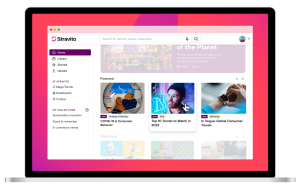IBM, HopStop Love Data for Efficient City Projects
![]() Technology has changed the way we live. It’s a faster, more dynamic world we’re moving in now, and it’s hard to imagine how we communicate to such distances and heights using very small devices. But unbelievable as it is, it’s reality and we’re living in it right now.
Technology has changed the way we live. It’s a faster, more dynamic world we’re moving in now, and it’s hard to imagine how we communicate to such distances and heights using very small devices. But unbelievable as it is, it’s reality and we’re living in it right now.
Today, technology companies are looking for ways to make cities efficient with the use of technology. More than half of the people today are living in urban areas, and it’s expected to increase to 70 percent by 2050.
With these figures in mind, IBM is looking into analytics technology as a tool for public and corporate initiatives. Big Blue recently completed the acquisition of Cambridge, UK-based i2 as the company looks forward to expanding its big data analytics software by helping both public and private entities in government, law enforcement, retail, insurance and other industries to access and analyze information they need to combat crime, fraud and other threats. The acquisition will enable IBM clients to put seemingly unrelated pieces of information to work, drawing on both unstructured and structured data sources such as criminal databases, social media and biometrics.
“Helping governments and businesses improve public safety and corporate security is a significant part of IBM’s business strategy,” said Craig Hayman, general manager, IBM Industry Solutions. “Through our acquisition of i2, we are strengthening our ability to help cities, countries, international organizations and private enterprises create safer environments for conducting business.”
![]() Another company that specializes in pedestrian navigation and mobile transit services, HopStop, is making its own contribution to efficient cities. HopStop has been awarded U.S. Patent No. 7,957,871, “Methods and Apparatuses for Navigation in Urban Environments” to add to its popular location-based service that provides door-to-door mass transit and walking directions. HopStop’s dynamic transit routing engine combines disparate transit data, street-level mapping data and user-generated input to provide optimal multi-modal directions and travel options for web and mobile users.
Another company that specializes in pedestrian navigation and mobile transit services, HopStop, is making its own contribution to efficient cities. HopStop has been awarded U.S. Patent No. 7,957,871, “Methods and Apparatuses for Navigation in Urban Environments” to add to its popular location-based service that provides door-to-door mass transit and walking directions. HopStop’s dynamic transit routing engine combines disparate transit data, street-level mapping data and user-generated input to provide optimal multi-modal directions and travel options for web and mobile users.
“Mapping and navigation on smartphones present an ideal user experience upon which to layer compelling, popular and valuable local services to consumers and advertisers alike,” said Joe Meyer, CEO of HopStop. “This patent further accelerates HopStop’s leadership role in the industry, and allows us to take greater advantage of the huge market opportunity presented by local search and mobile services.”
Both companies and governments are working together to streamline business operations and enable a city to be more dynamic than ever. The NYC BigApps held June this year invited developers to submit ideas for web, desktop, or mobile application that would benefit the residents of New York City, so are its businesses and visitors.
Anyway, here’s a list of America’s most inventive cities. Not surprisingly, California is home to 9 of these innovation hubs.
A message from John Furrier, co-founder of SiliconANGLE:
Your vote of support is important to us and it helps us keep the content FREE.
One click below supports our mission to provide free, deep, and relevant content.
Join our community on YouTube
Join the community that includes more than 15,000 #CubeAlumni experts, including Amazon.com CEO Andy Jassy, Dell Technologies founder and CEO Michael Dell, Intel CEO Pat Gelsinger, and many more luminaries and experts.
THANK YOU













